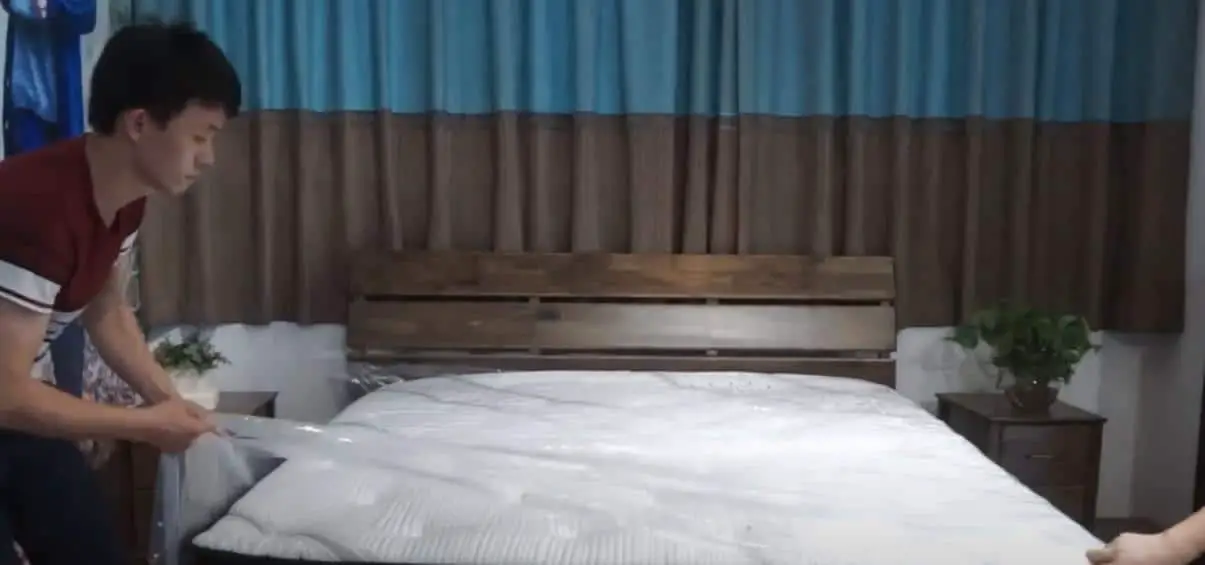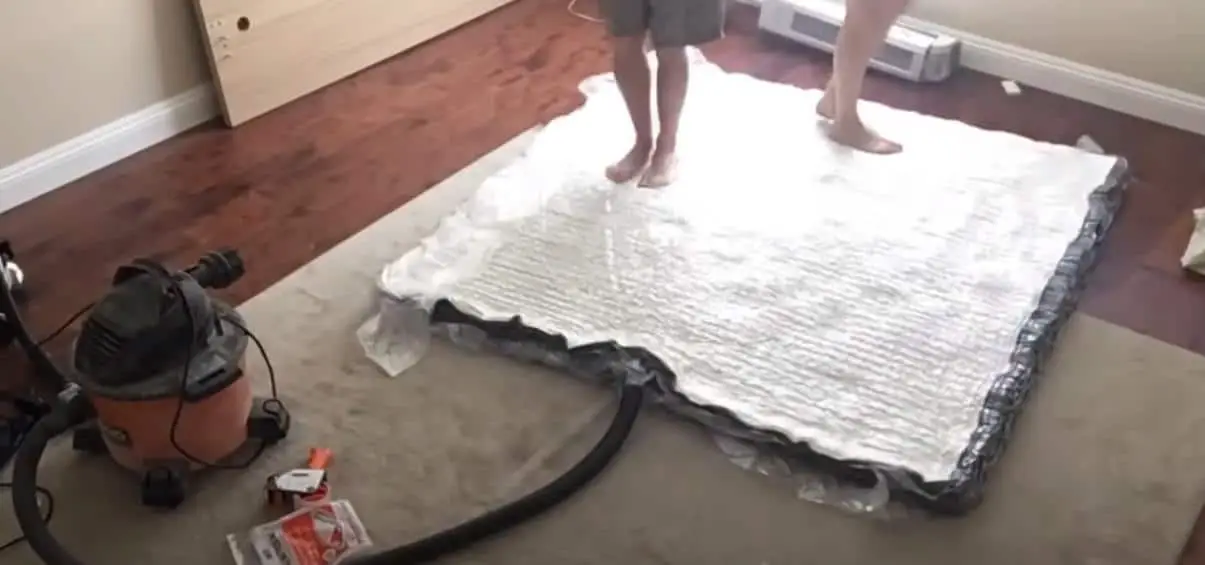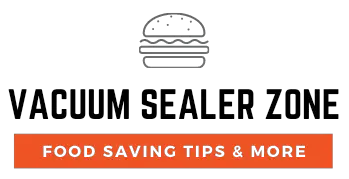Key Takeaways
- You can vacuum seal a mattress in order to store or transport it
- When doing so, it is important to use the right size bag and attach a valve to the vacuum hose
- You can find specialized vacuum seal bags for mattresses online or in stores
Have you ever wondered if you could vacuum seal your mattress? Well, it turns out that you can! There are several benefits to doing so, including prolonging the life of your mattress and protecting it from dust and other allergens.
Plus, it’s a great way to store your mattress if you need to move or travel with it.
So, how do you vacuum seal a mattress? First, you’ll need a special bag that’s large enough to fit your mattress. You can find these at most home improvement stores. Make sure to get a bag with a valve so that air can be sucked out of it.
Next, lay your mattress in the bag and open the valve. Slowly start vacuuming out the air until the mattress is compressed and sealed inside the bag. That’s it! Your mattress is now vacuum sealed.
Keep in mind that there are some risks associated with storing your mattress in a vacuum-sealed bag. If punctured, holes can form and allow moisture or pests inside. It’s important to inspect your bags regularly for any holes or leaks.
Additionally, only wash your vacuum-sealed mattress when absolutely necessary as water can damage the integrity of the sealant.

What are the steps for vacuum sealing a mattress?
If you’re looking to extend the life of your mattress, vacuum sealing is a great option.
Not only will it protect your mattress from dust, dirt, and other debris, but it will also prevent moisture from damaging the mattress.
Vacuum sealing a mattress is a simple process that only requires a few materials. Here are the steps:
- To vacuum seal a mattress, you will need a mattress bag and a vacuum bag with a valve attached. The first step is to cut out the valve from the vacuum bag, leaving enough plastic around the valve to secure it with tape
- Next, cut a hole in the mattress bag small enough that only the valve fits through. Once the hole is cut, duct tape the ends of the mattress bag to ensure it is secure
- Slide your mattress into the bag and fit the valve onto the hole you cut in order to start removing air from the bag. Depending on how big your vacuum cleaner is, you may need to do this in sections
- Once all of the air has been removed from the bedding area , take off the valve and duct tape over the hole
What size vacuum seal bag do I need for a mattress?
Vacuum sealing is a great way to store your belongings and keep them fresh for longer. But what size vacuum seal bag do you need for a mattress?
The size of the vacuum seal bag needed for a mattress will depend on the size of the mattress.
Extra large bags can also be used for other purposes such as storing duvets, pillows, towels, and clothes.
How do I know if my mattress is damaged while vacuum sealing?
Vacuum sealing your mattress is a great way to extend its life and keep it clean. However, you need to be careful not to damage the mattress while doing so.
The best way to know if your mattress is damaged while vacuum sealing is to remove it from the box and puncture the seal within three days.
If you don’t do this, your mattress could be at risk for off-gassing, which can cause a strong odor.
Additionally, if you notice any sagging, lumpiness, unevenness, or springs poking through, these are all signs that it’s time to replace your mattress.
Is it better to store or transport a mattress that has been vacuum sealed?
Vacuum sealing a mattress is a great way to protect it from dirt, dust, and other allergens. But what’s the best way to store or transport a vacuum-sealed mattress? In a storage bag, of course!
Here are some benefits of using a storage bag for your vacuum-sealed mattress:
- It will keep your mattress clean and free of allergens
- It’s a great way to protect your investment.
- You can easily move your mattress around without having to carry it.
- A storage bag is much more convenient than lugging a heavy vacuum cleaner around with you
Can all types of mattresses be vacuum sealed?
Vacuum sealing is a process that involves removing all the air from a container before sealing it. This can be done with food, clothing, and even some types of mattresses.
While vacuum sealing can extend the shelf life of foods and clothes, not all types of mattresses can be safely vacuum-sealed.
Some mattress materials can be damaged by being exposed to a vacuum for too long.
If you’re considering vacuum sealing your mattress, check with the manufacturer first to see if it’s safe to do so.
How long will a mattress stay fresh after being vacuum sealed?
Vacuum sealing a mattress is a great way to prolong its lifespan and keep it fresh for longer. However, there are some things to consider before doing so.
Memory foam mattresses are particularly susceptible to permanent damage from being vacuum sealed. If your mattress is still under warranty, be sure to check with the supplier first before vacuum sealing it.
For other types of mattresses, most will stay fresh for 2 months or less after being vacuum sealed.
If you do decide to vacuum seal your mattress, be sure to store it in a cool, dry place out of direct sunlight. This will help prevent any premature deterioration of the materials.
Is there anything special I need in order to vacuum seal my mattress successfully?
No, there is nothing special you need in order to vacuum seal your mattress successfully. All you need to do is puncture the vacuum seal and use a shop vac or regular old vacuum cleaner.
Vacuum sealing your mattress is a great way to protect it from dust, dirt, and other allergens that can cause havoc for people with allergies or asthma. It’s also an effective way to prevent bed bugs from infesting your mattress.
What are some of the benefits of vacuum sealing my mattress instead of using another method?
Vacuum sealing your mattress has a number of benefits over other methods of protecting it from allergens, dust mites, and other debris.
Additionally, vacuum sealing protects items from freezer burn and dehydration and extends their shelf life.
Here are some of the key benefits of vacuum sealing your mattress:
- Controls allergens: By keeping your mattress free of allergens, you can reduce the risk of triggering allergies or asthma attacks
- Reduces dust mites: Dust mites are tiny creatures that thrive in dusty environments. They’re known to cause respiratory problems and trigger allergies. Vacuum sealing your mattress will create an environment that’s inhospitable for dust mites, meaning they’ll be less likely to set up shop in your bedding
- Prevents freezer burn: Freezer burn is caused by moisture loss and results in discoloration, off flavors, and texture changes in food. When you vacuum seals your mattress, you create an airtight barrier that prevents moisture from escaping. This means your mattress will stay fresh longer if you need to store it in the freezer for any reason
- Extends shelf life: Vacuum-sealed mattresses also have a longer shelf life than those that are not sealed. This is because the lack of oxygen inside the seal prevents mold and mildew from growing on the surface of the mattress

Are there any risks associated with vacuuming sealing my mattress that I should know about before starting the process
Yes, there are some risks associated with vacuuming and sealing a mattress. These include damaging the mattress, off-gassing odors, and long-term exposure to VOCs. However, if done carefully, these risks can be minimized.
When vacuum sealing a mattress, it is important to make sure that the seal is airtight. If not, you run the risk of damaging the mattress.
Additionally, when you first seal the mattress, it may release some odors from the chemicals in the foam or fabric. These odors should dissipate within a few days.
Finally, long-term exposure to VOCs (volatile organic compounds) can be dangerous for your health.
For this reason, it is best to use a vacuum-sealed mattress cover rather than seal the entire mattress itself.
Final Verdict
When it comes to vacuum sealing a mattress, the process is actually pretty simple. You’ll just need to make sure you have the right materials on hand.
First, you’ll need a quality vacuum sealer and some heavy-duty bags that are big enough to fit your mattress.
Follow the instructions on your vacuum sealer to ensure that you’re using it correctly.
Then, just seal up the bag and make sure there are no air pockets. Your mattress will be well protected from dust, dirt, and moisture this way.



![Can You Vacuum Seal Tomatoes? [The Proper Way!]](https://vacuumsealerzone.com/wp-content/uploads/2021/08/Can-You-Vacuum-Seal-Tomatoes-350x200.jpg)